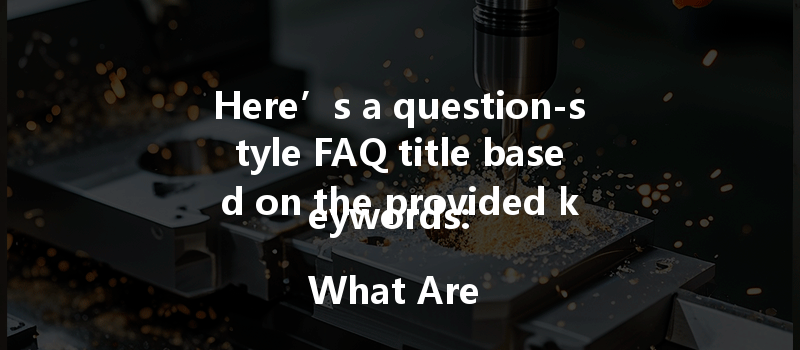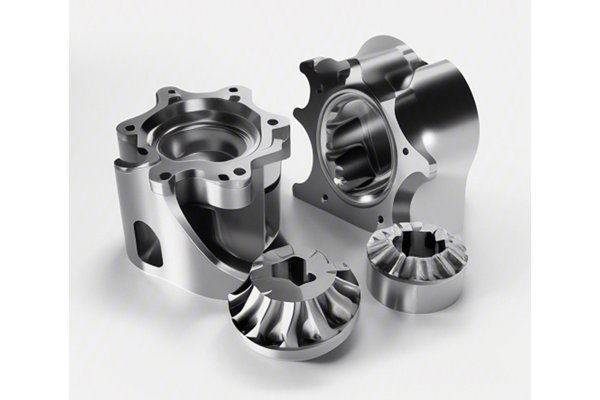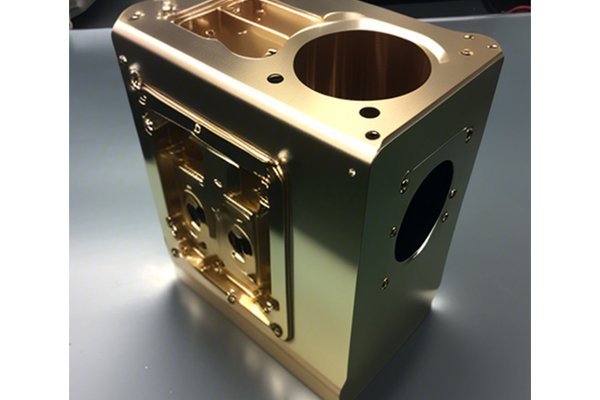Did you know that the global 3D printing market is expected to reach nearly $70 billion by 2027? With the rise of this technology, many industries are reevaluating traditional manufacturing methods, particularly CNC machining. As a manufacturing specialist or entrepreneur, understanding these processes can bolster your competitive edge, equipping you with the right tools for effective product development. So, the question on everyone’s mind is: How does 3D printing stack up against CNC machining, particularly in plastics?
In this extensive blog post, we will explore the advantages and disadvantages of 3D printing compared to CNC machining of plastics. We’ll delve deeper into each manufacturing technology, highlight their unique features, and outline comprehensive solutions to common challenges associated with each method. The aim is to provide you with all the insights you need to make an informed decision for your manufacturing needs.
Understanding the Technologies
Before delving into the advantages and disadvantages of each technology, let’s clarify what 3D printing and CNC machining are.
What is 3D Printing?
3D printing, also known as additive manufacturing, involves creating a physical object from a digital model. The process typically involves layering material to build the desired shape.
Key techniques include:
What is CNC Machining?
On the other hand, CNC machining refers to subtractive manufacturing. It involves cutting away material from a solid block to create the desired shape.
Common CNC machining processes include:
Understanding these fundamentals is crucial as we navigate through their advantages and disadvantages.
Advantages of 3D Printing
One of the most compelling advantages of 3D printing is its capacity to fabricate complex geometries. Traditional manufacturing techniques often struggle with intricate designs, while 3D printing allows for unique features without significant cost or time increases. For example, lattice structures, internal channels, and organic shapes can be produced easily using 3D printing.
Solution: If you’re developing intricate parts, consider 3D printing to explore creative avenues in design that are impractical with CNC machining. This flexibility can lead to innovative products.
3D printing excels in rapid prototyping, enabling designers and engineers to iterate quickly. The time from concept to prototype can be drastically reduced, allowing companies to test designs and gather feedback sooner.
Solution: Utilize 3D printing during your product development phase to accelerate the design cycle. This faster turnaround allows you to adapt and refine your product based on real user feedback, ultimately leading to a more user-centered final product.
Since 3D printing involves adding material layer by layer, it is often more efficient than subtractive methods, which waste considerable amounts of raw material. The reduced waste translates directly into cost savings and a smaller environmental footprint.
Solution: For eco-conscious organizations, consider opting for 3D printing to minimize material waste and explore sustainable materials for your products.
3D printing shines in scenarios requiring customization. It allows for easy alterations to designs for individual consumers or specific applications without additional cost. This adaptability is particularly beneficial in medical applications, where personalized implants or prosthetics can be made easily.
Solution: If your business model relies on customized products, employing 3D printing will enhance your efficiency and responsiveness to customer needs, allowing you to stand out in a competitive market.
For small-scale projects or startups, the lower capital investment required for 3D printing can be advantageous. With several affordable printers now available, small batches can be produced without the need for significant expenditure on machinery.
Solution: Consider investing in a 3D printer for in-house capabilities, allowing you to quickly produce limited runs or prototypes without relying heavily on external suppliers.
Disadvantages of 3D Printing
While 3D printing excels in complexity, it often falls short in achieving high surface finish quality and tight tolerances compared to CNC machining. The layered nature of 3D printed objects can result in visible layering lines and a rougher surface.
Solution: If your application demands tight tolerances or superior surface finishes, you may consider post-processing methods such as sanding, polishing, or even CNC machining of finished 3D printed parts.
For large volume production, CNC machining may excel over 3D printing with its ability to quickly fabricate multiple parts in less time, especially with well-established production lines.
Solution: If mass production is your goal, evaluate your options carefully and consider CNC machining alongside 3D printing for specific components in large-scale manufacturing runs.
Although 3D printing offers a variety of materials, each technique is limited to specific ones. Many traditional plastics, metals, and other materials aren’t suited for 3D printing without compromising quality and strength.
Solution: Stay informed about advancements in materials compatible with 3D printing. For critical applications requiring specific material properties, CNC machining may be a more reliable option.
3D printed parts often require finishing processes to improve the surface quality, strength, or functionality, which can add time and costs to the manufacturing cycle.
Solution: Incorporate post-processing into your production schedule and budget if you choose 3D printing. Understanding these processes earlier can mitigate delays in project timelines.

With the rise of 3D printing, concerns about intellectual property might arise due to the ease of copying designs. This aspect might be particularly concerning for businesses that rely on proprietary designs and patents.
Solution: Ensure robust protection for your designs by leveraging legal protections and implementing secure digital file storage. Working with trusted suppliers can further safeguard your intellectual property.
Advantages of CNC Machining
CNC machining is renowned for its precision and ability to maintain tight tolerances. Whether crafting high-performance parts for the aerospace industry or creating machined components for medical devices, CNC machining consistently delivers accuracy.
Solution: If you require high-precision components, opt for CNC machining to guarantee industry-standard tolerances and high-quality parts.
CNC machining can work with a broader range of materials, including metals, plastics, woods, and composites. This versatility allows it to cater to a wide array of applications and industries.
Solution: Assess your material needs carefully and consider CNC machining if you require specialized materials that are not compatible with 3D printing.
CNC machined products usually exhibit superior surface finishes compared to their 3D printed counterparts. The process’s ability to handle cutting operations results in less visible layers, better aesthetics, and improved functional performance.
Solution: If product presentation and finish are critical to your market impact, CNC machining may serve your business better.
CNC machining is a more mature and established technology compared to 3D printing. With decades of use across various industries, there is a wealth of knowledge, tooling, and skilled labor readily available.
Solution: Leverage the expertise of experienced machinists during your planning and production phases to draw on established best practices in CNC machining.
For mass production, CNC machining can be more cost-effective. When production runs are high, fixed costs spread over many units can lead to significant cost reductions.
Solution: For high-volume projects, evaluate the cost savings possible through CNC machining. The initial setup can be offset by the gains during large runs.
Disadvantages of CNC Machining
The investment necessary for CNC machinery can be considerable. Setting up a CNC machining operation involves purchasing equipment, programming, and tooling which can deter smaller businesses or startups.
Solution: For new businesses, consider partnerships with CNC suppliers or contract manufacturers to mitigate initial costs until you can scale.
While CNC machining allows for a certain degree of complexity, it can struggle with designs that are too intricate. Complex internal geometries may require additional operations or may be impractical altogether.
Solution: Prioritize design simplicity for CNC machining while exploring hybrid manufacturing strategies wherein 3D printing creates complex internal features for subsequent CNC tooling.
For prototypes or small batches, CNC machining may involve longer lead times compared to 3D printing, as setups can take time and material procurement can prolong schedules.
Solution: Plan ahead and factor in extra time during the design cycle for CNC processes to manage customer expectations concerning delivery timelines.
As a subtractive manufacturing method, CNC machining often produces a significant amount of waste from leftover material. This factor can contribute to higher material costs and environmental concerns.
Solution: Invest in technologies that recycle waste materials or incorporate sustainable practices that minimize waste, thereby promoting eco-friendly production.
CNC machines can be complex and require skilled operators for efficient functioning. Additionally, maintaining these machines can burden manufacturers with additional costs and operational challenges.
Solution: Invest in proper training and maintenance programs for your CNC machine operators, ensuring longevity and reducing downtime.
Making the Right Choice
Assessment of Your Needs
Choosing between 3D printing and CNC machining often depends on your specific project requirements. Here are a few considerations to guide you:
Hybrid Approaches
Many manufacturers are adopting hybrid approaches that involve utilizing both 3D printing and CNC machining. For instance, 3D printing can be used for rapid prototyping, while CNC machining can handle finalized parts for superior precision and finish.
Solution: Investigate systems that leverage the strengths of each technology to optimize both cost and performance. This approach can result in improved operational efficiency and product quality.
In summary, understanding the core advantages and disadvantages of both 3D printing and CNC machining is vital for navigating today’s competitive landscape. Each technology offers unique benefits that cater to specific needs and projects.
From the design flexibility and rapid prototyping capabilities of 3D printing to the precision and material versatility of CNC machining, acknowledging these factors empowers you to make informed decisions that suit your operational goals.
As technology continues to evolve, the manufacturing world is increasingly shifting toward hybrid models that incorporate the strengths of both methods. Exploring these possibilities can improve revenue potential, reduce production costs, and ultimately refine product offerings.
In conclusion, whether you are a budding entrepreneur, an established business, or a manufacturing specialist, understanding these processes and their implications can enhance your strategic approach. The choices made today will shape your business’s trajectory in the fast-paced world of manufacturing — so think carefully, act wisely, and equip your business with the best tools for success.






